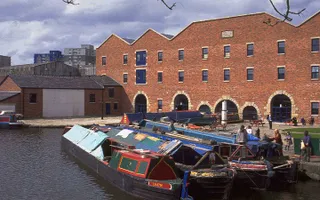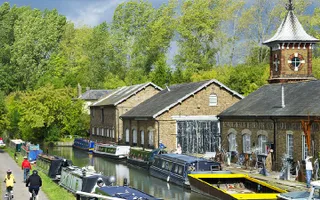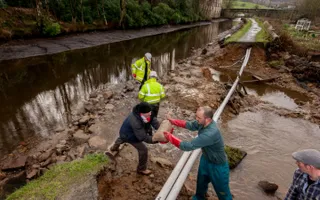The health and performance of the inland waterway network owned and managed by us is directly linked to the quality of the neighbourhood and environment through which our canals and rivers pass.
The public benefit delivered from canals, rivers and docks in turn is substantially dependent upon their health and performance. An underperforming waterway is usually a symptom of the economic and social failure of the neighbourhood through which it passes.
Our waterways can provide benefits to the wellbeing of local communities. We believe that the formation of planning policy that identifies and includes approaches for promoting access to our network is highly important for helping to realise the positive benefits of our network to local communities.
At all spatial levels there is a need to strengthen existing planning policy in order to provide a robust planning policy framework that supports canals, rivers and docks as a cross-cutting policy theme; acknowledging the value of canals, rivers and docks, in terms of:
- being a form of strategic and local infrastructure performing multiple functions (including sustainable transport, open space and green infrastructure, flood risk, drainage and water supply), which is likely to be affected by all scales and types of development
- their roles in improving the physical environment, opportunities for people and the wider economy
- supporting their ability to deliver economic, social and environmental benefits to local communities and the nation as a whole
- their contribution to supporting climate change, carbon reduction and environmental sustainability
- the public benefits including people's health and wellbeing that can be and are being generated by our canals, rivers and docks
- supporting future development, regeneration and improvement of canals, rivers and docks
- protecting the heritage, environmental and recreational value of canals, rivers and docks and safeguarding them against inappropriate development
- securing the long-term sustainability of inland waterway network, their corridors and adjoining communities
Our guide to waterways and the National Planning Policy Framework (coming soon) demonstrates the breadth of policy topics that waterways cover. Also see our values and benefits of waterways section, and our advice note on waterway proofing planning policy at all the different spatial levels. Given the multi-functional nature and varying characteristics of the waterways, there is no one-size-fits-all planning policy.
While canals and rivers are both forms of green infrastructure, there are differences between them in terms of their characteristics, role and function. For example, rivers are a natural feature whereas canals are man-made assets. Such differences are likely to require different policy approaches.






